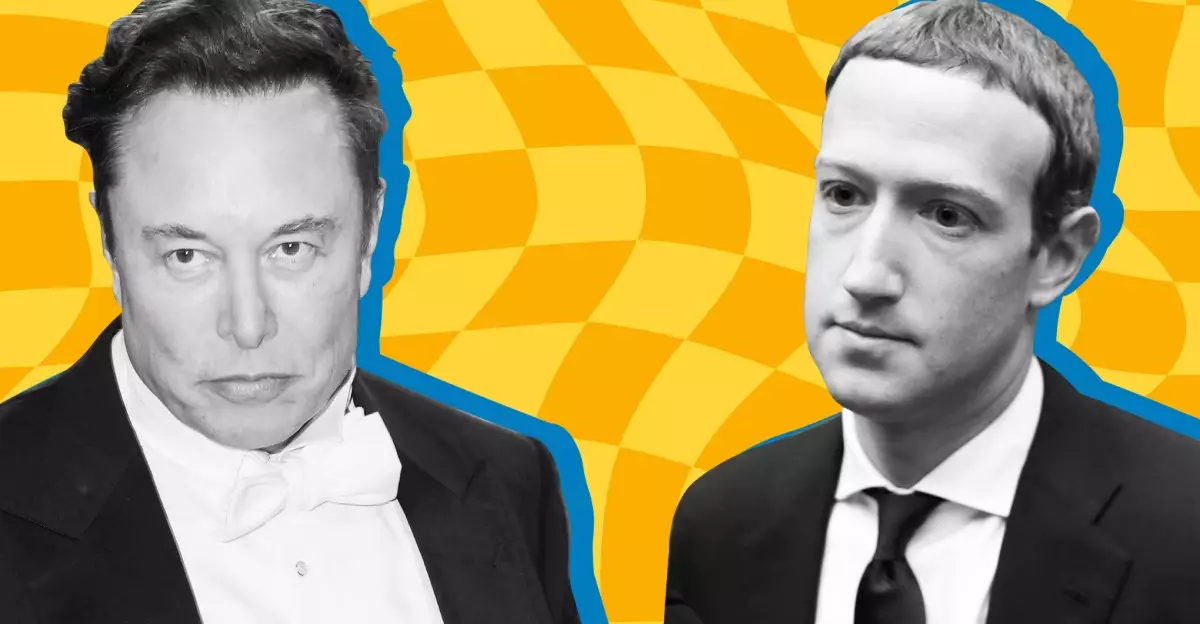In a bizarre intersection of technology and humor, it appears that the streets of California have become the stage for an unusual form of satire involving two of Silicon Valley’s most recognizable figures: Elon Musk and Mark Zuckerberg. Over the past weekend, crosswalk buttons in cities like Palo Alto, Redwood City, and Menlo Park underwent an unexpected transformation when their voice prompts were allegedly hijacked by AI-generated renditions of these tech titans. As onlookers captured videos of what can only be described as comedic commentary from the cloned voices, an alarming yet amusing controversy has sparked discussions about both the vulnerabilities of modern technology and the absurdity of pop culture’s relationship with our tech leaders.
A Digital Disruption with a Dash of Dark Humor
The parody messages—ranging from Musk’s calls for friendship to Zuckerberg’s self-referential jokes about societal impact—have taken the internet by storm. One example included Musk lamenting about his existential loneliness while joking about the value of Cybertrucks, a vehicle that has become almost emblematic of his brand. Meanwhile, Zuckerberg’s voice took a satirical jab at Meta’s alleged impact on democracy, brazenly admitting to “cooking our grandparents’ brains with AI slop.” This bizarre hybrid of street art and modern digital commentary serves to reflect societal sentiments regarding the executives who dictate technological advancement, often without a clear understanding of the broader consequences at play.
Despite the apparent humor, the situation raises significant concerns. For those who rely on audible signals for navigation, this crude holography of iconic figures could serve as a distraction rather than assistance. The very systems that are intended to provide help may instead have unwittingly instantiated avenues for confusion. One must ask: Who thought it was a good idea to turn essential navigation tools into platforms for parody?
The Ethics of AI and Its Voice Modulation Mischief
This incident unexpectedly throws the ethical dilemmas surrounding AI technology into the spotlight. The essence of these hijinks lies not just in the comedy delivered by the cloned voices but also in the inherent risk of AI’s capacity for mischief. What does it mean for authenticity when voices, faces, and presences can be synthetically replicated for dubious or comedic purposes? The boundaries between celebrity and parody become increasingly blurred as our world becomes more reliant on technology for social interaction.
Moreover, the fact that city officials quickly disabled the crosswalks’ voice features indicates an urgent need for accountability in tech infrastructure. We live in an age where the potential for technological auditing and ethical oversight becomes paramount, and the cavalcade of digital impersonations serves as a cautionary tale about our uncritical acceptance of AI.
The Reaction: An Outpouring of Online Laughter
The weekend episode rapidly became a social media sensation, igniting a firestorm of memes, reactions, and commentary that weaves in the dual threads of amusement and critique. Users on various platforms have shared videos of the incidents, accompanied by transcriptions showcasing the absurdity of Musk’s and Zuckerberg’s simulated voices. This interactivity and collaboration among the digital citizenry demonstrate more than just shared humor; it reveals a collective desire to wrestle with the implications of technology in their lives.
As the laughter reverberates across Twitter and TikTok, one must ponder whether this is just a phase of digital flippancy or an awakening to deeper discourses surrounding modern leadership and accountability in tech. Is it merely entertainment, or does it indicate a societal stance against the unchecked power of tech moguls and their influence over our lives?
A Technological Parody: Repercussions for the Future
Ultimately, the comedic elements embedded within these AI-generated voices do more than entertain; they stimulate vital discussions about technology, authority, and the ever-blurring line between parody and reality. The playful nature of the messages juxtaposed with their societal implications elicits not only laughter but also calls for improvement in our systems.
As we continue to weave technological advancements into the fabric of daily life, one can only hope incidents of this nature serve as catalysts for change, assuring that the tech community remains aware of its responsibilities. The desire for laughs doesn’t negate the inherent need for accountability; indeed, it accentuates it. As we encounter these amusing digital distortions of real-life icons, we must evaluate what they represent about our society’s future interaction with technology—an ever-evolving dance of delight and caution.

